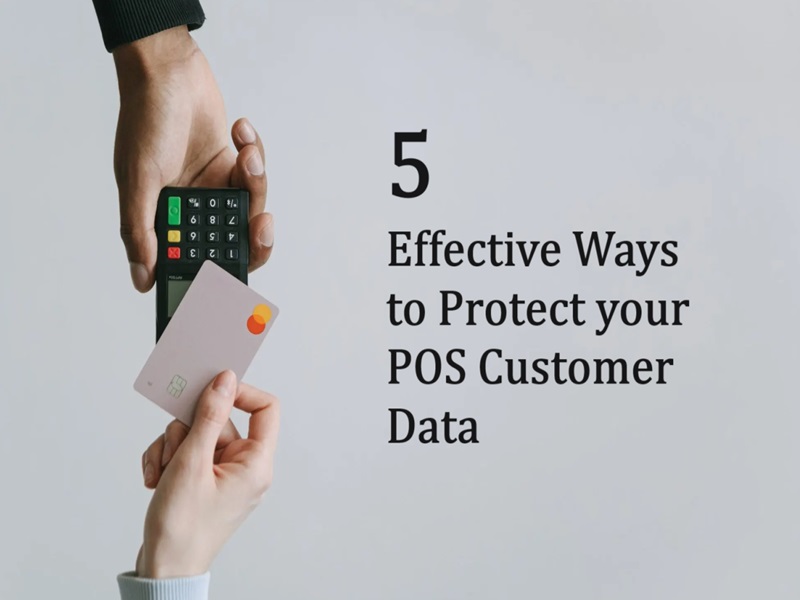What is POS Security? 5 Effective Ways to Protect Customer Data

Point of Sale (POS) systems are integral to modern businesses, streamlining transactions and enhancing customer experiences. However, with the convenience they offer comes the responsibility of safeguarding sensitive customer data. In this blog post, we’ll delve into the realm of POS security, exploring its significance and presenting five essential strategies to protect customer data effectively.
What Is POS Security?
POS security refers to the measures put in place to protect the integrity, confidentiality, and availability of data processed through Point of Sale software. These systems handle critical customer information, including payment details, personal data, and more, making them prime targets for cyber threats.
Importance of POS Security
The significance of POS security cannot be overstated. Breaches in POS systems not only compromise sensitive customer information but also damage brand reputation and erode customer trust. Understanding and implementing robust security measures are essential in today’s digital landscape to mitigate these risks.
5 Ways to Protect Customer Data
1. Encryption is Key
Encrypting data at every stage of the transaction process is fundamental. Implement end-to-end encryption to encode sensitive information, rendering it unreadable to unauthorized entities. This ensures that even if intercepted, the data remains secure.
2. Regular Software Updates and Patching
Keeping POS software up-to-date is crucial. Regularly installing security patches and updates provided by vendors helps address vulnerabilities that cybercriminals may exploit. Neglecting updates can leave systems exposed to known threats.
3. Implement Strong Access Controls
Limiting access to the POS system through strong authentication methods such as passwords, biometrics, or multi-factor authentication (MFA) adds an extra layer of security. Assign role-based access to restrict privileges based on job roles and responsibilities.
4. Secure Network Infrastructure
Securing the network infrastructure that connects POS devices is paramount. Utilize firewalls, intrusion detection systems, and segmentation techniques to prevent unauthorized access and data breaches. Employing a separate network for POS transactions can also enhance security.
5. Educate and Train Staff
Human error remains a significant factor in security breaches. Conduct regular training sessions to educate employees about security best practices, phishing awareness, and handling sensitive data. Creating a culture of security awareness among staff members is instrumental in fortifying defences.
Conclusion
In an age where data breaches are rampant, prioritizing POS security is imperative for businesses. Safeguarding customer data not only protects individuals but also upholds the integrity of the organization. By implementing robust encryption, staying updated with software patches, enforcing access controls, securing networks, and educating staff, businesses can significantly reduce the risks associated with POS vulnerabilities. Investing in comprehensive POS security measures is an investment in trust, ensuring a safer and more secure environment for both businesses and customers.